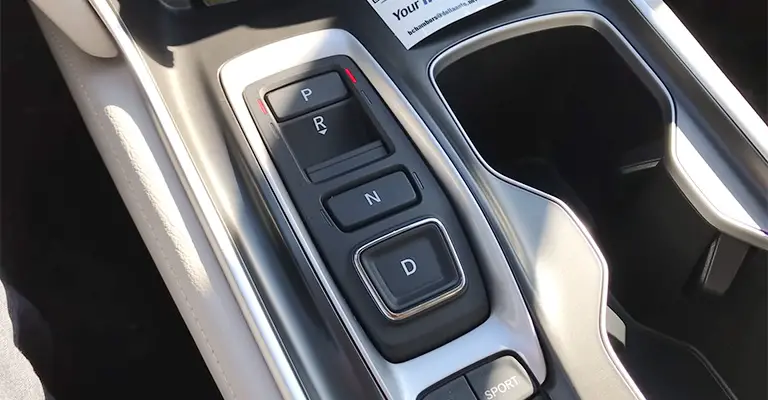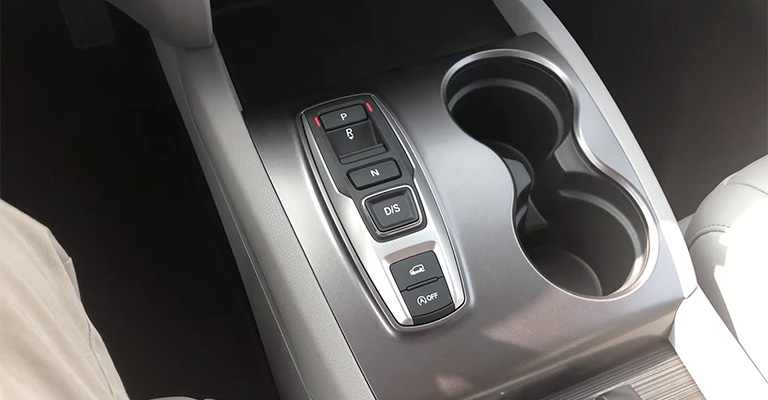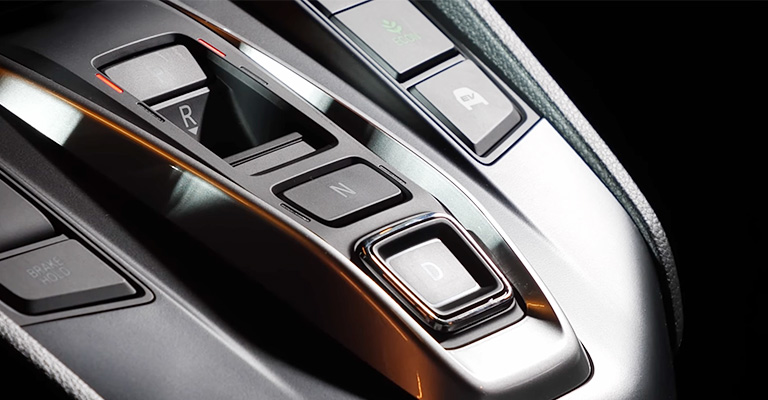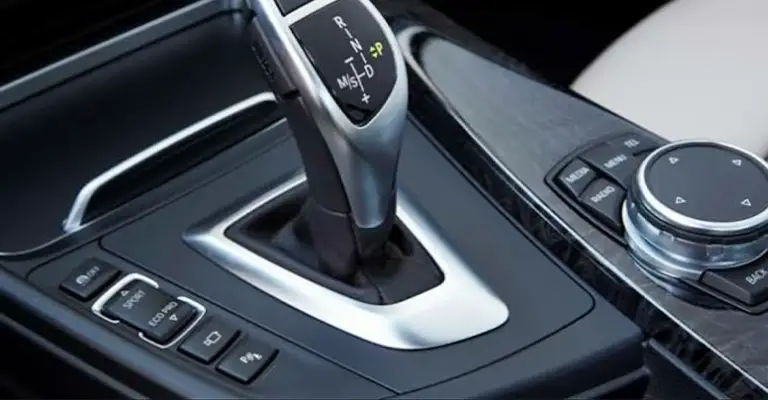Push button transmissions are the latest breakthrough in automatic transmission technology, and they provide drivers with unprecedented levels of convenience and control. So, how does push button transmission work in your car?
Push button transmissions use an electronically controlled hydraulic system. This system uses an electronic solenoid to activate hydraulic pistons, rapidly shifting the gears according to the driver’s command.
It’s designed to turn the gears a fraction of a second, allowing smoother and more leisurely drive. In today’s article, we’ll dive deep into this revolutionary type of transmission and explore why it is changing the way we drive. So, let’s get started.

Push Button Transmission: What Is It And How Does It Work?
In recent years, push-button transmissions have become increasingly popular in the automotive world. They offer increased convenience, enhanced safety, and improved efficiency, making them the ideal choice for many drivers.
But what is push-button transmission, and how does it work? Let’s take a closer look.
What Is Push Button Transmission?
At its most basic, a push button transmission is a type of transmission that can be operated via the press of a button. The feature turns a standard transmission into one used via a series of buttons on a center console or dashboard.
This has become increasingly popular and is often referred to as shift-by-wire technology or push-button-shifting.
Benefits of Push Button Transmissions

Push-button transmissions offer several benefits, often making them a popular choice for many cars. Here are just some of the significant benefits of push-button transmission:
Easier to Use:
By simply pressing a button to shift, controlling the transmission is easier than ever. This can be incredibly useful in those more challenging driving scenarios where both hands are already on the wheel.
In this sense, it increases safety as you do not have to take your hands off the wheel to shift.
Faster Shifting
Traditional manual transmissions require several distinct motions and a series of interlinked gears and levers.
By eliminating these components and using computer-controlled actuators, push-button transmissions often shift much faster than traditional transmissions.
Improved Efficiency
The improved speed of changes and lack of additional components can also improve a car’s overall efficiency.
Disadvantages of Push Button Transmissions

Despite the benefits, there are several significant push-button shifter problems. These include:
More Electronic Components
Using electronic components means more repair and maintenance to consider when using this type of transmission. For this reason, the cost of ownership can be much higher.
Loss of Direct Control
While the push buttons make it easier to change gears, it also means there is less immediate feedback or direct control over the transmission.
Types of Push Button Transmissions

There are two main types of push-button transmissions – automatic and sequential manual transmissions.
Automatic Push Button Transmissions
Automatics are the most common and use a traditional transmission type but with an automatic gear-changing system.
Sequential Manual Transmissions
These are manual-style transmissions that use automated technology on top of the standard components. The disadvantage is that it takes away much of the manual control, typically in manual transmission.
How Do Push Button Transmissions Work?

Push button transmissions work by using electronic components to control the gear changes.
Depending on the transmission type, this could be as simple as pressing a button to shift or as complex as using a computerized shifting system with actuators to control the gears.
In the case of automatic transmissions, the computers take over the shifting process and automatically move into the next gear as required. The driver presses one of the center console or dashboard buttons to change gears manually.
For sequential manual transmissions, the driver still has more control, with the system typically featuring two buttons – an upshift button to move up a gear and a downshift button to move down a gear.
What Are the Components of a Push Button Transmission?
How exactly do push-button transmissions work? Here are some of the components and elements that make push-button transmissions possible:
Push Button Shifters
Push button shifters use a series of electrical and mechanical components to allow drivers to switch between gears while pushing a button. Each button corresponds to a particular gear.
Gear Selector
The gear selector is the mechanism responsible for the actual movement of changing gears. The selector is connected to the transmission and transfers the driver’s command from the shift lever to the transmission.
Sensors and Controllers
Sensors and controllers help the vehicle recognize what gear the car is in and when it’s time to shift to a different gear. These components are essential for quick, safe shifting.
Gear Shift Lever
The gear shift lever delivers a signal to the transmission, telling it which gear the driver wants the vehicle.
Electrical Solenoid
An electrical solenoid is an electromechanical device that helps control fluid flow in the transmission, assisting the transmission in making seamless shifts between gears.
Forward and Reverse Selection
Push button transmissions come with forward and reverse selection, giving the driver the ability to shift gears with the push of a button.
Cars with Push-Button Transmission System
So, which cars have adopted the feature? Here’s a look at some of the best push-button shifter cars currently available.
● BMW 5-Series (2010-Present): The 5-Series is a high-end luxury sedan from BMW that is known for its sleek yet functional design. The 5-Series has a push-button transmission option that is intuitive and easy to use.
● Audi A4 (2009-Present): The A4 is another luxury sedan from Audi that also features a push-button transmission. It’s sportier and sleeker than the 5-Series and is known for its sophistication and power.
● Lexus GS (2006-Present): The GS is the flagship sedan from Lexus and includes a push-button transmission.
It’s a great combination of luxury, performance, and technology, making it an excellent option for those looking for a high-end, luxury driving experience.
● Mercedes-Benz E-Class (2002-Present): The E-Class is a powerful and sophisticated luxury sedan equipped with a push-button transmission. It’s one of the most popular sedans offered by Mercedes-Benz, offering a great driving experience.
● Cadillac CTS (2008-Present): The CTS is another luxury sedan offered by Cadillac that is equipped with a push-button transmission. It has a modern, athletic design and is excellent for those looking for a powerful, luxury engine.
● Jaguar XF (2008-Present): The XF is a luxury sedan from Jaguar that features a push-button transmission. It’s sleek and sophisticated, which makes it an excellent car for those who want to make a statement when they drive.
● Infiniti G37 (2008-Present): The G37 is a performance sedan from Infiniti that is equipped with a push-button transmission. It has a sporty design that offers a great driving experience for those looking for a car with power and luxury.
● Volvo S60 (2006-Present): The S60 is a luxury sedan from Volvo that includes a push-button transmission. It’s an excellent choice for those who want a quiet and comfortable ride but with some power and performance when needed.
● Honda Accord (2013-Present): The Accord is a reliable family sedan from Honda that comes with a push-button transmission.
It’s capable of both comfort and performance and is an excellent option for those looking for an affordable family car.
● Toyota Camry (2012-Present): The Camry is a reliable sedan from Toyota that features a push-button transmission. It’s an excellent choice for those who want a dependable and comfortable car at an affordable price.
Can I Upgrade My Car to a Push-Button Transmission System?
Are you considering upgrading your car to a push-button transmission system? You’re not alone. As technology developments make modern cars more advanced, many drivers are looking to upgrade their vehicle’s transmission system.
Yes, upgrading your car to a push-button transmission system is possible if you’re willing to invest time and money into the process.
Depending on the make and model of the car you have, the process can be relatively straightforward or more complicated.
Therefore, you should consult a professional mechanic or transmission specialist to determine the best course of action for your particular car.
Here’s a step-by-step guide to help you boost your vehicle to a push-button transmission system.
Step 1: Familiarize Yourself with the Components
The first step to upgrading your car to a push-button transmission system is familiarizing yourself with the components.
You can start by reading the owner’s manual to review the terminology and specific parts of the transmission system you’ll need to know when upgrading. You can find tutorials online for your car’s make and model if you don’t have the manual.
Step 2: Research Car Shops
The next step is to research local car shops to see if any offer push-button transmission upgrades.
When you have a list of shops to look at, read customer reviews and requests for quotes to ensure you find the best shop to upgrade your car.
You should also contact the car manufacturer if they offer special services for upgrading your vehicle.
Step 3: Prepare Your Car
Once you’ve identified the shop and reviewed its terms and conditions, it’s time to prep your car for the upgrade.
Before any significant repair, it’s essential to give your vehicle a thorough checkup. That means looking at the engine, transmission, suspension, brakes, and other components to ensure they work correctly.
Step 4: Buy the Push-Button Transmission System
Standard features in push-button transmission systems include dual-clutch or manual shift control, overdrive settings, and paddle shifters.
Now it’s time to purchase the actual push-button transmission system. When shopping for one, research the features and components you want.
Step 5: Have a Professional Install the Parts
Once you’ve purchased the parts, it’s time to have a professional install them. Make sure to find a shop with certified mechanics and specialized tools that work specifically with your make and model.
During the installation, the mechanic will use the owner’s manual to install the components in the right way.
Step 6: Test the Pushing System
The last step is to have the push system tested and tuned. After the parts have been installed, the mechanic will ensure each component is in the right place and test the buttons and shifters to ensure everything is working correctly.
After the testing and tuning, it’s time to hit the streets and enjoy your new push-button transmission.
Maintenance Tips: Push Button Transmissions
Whether you have a custom-modified street rod or a heavy-duty tow vehicle, a push-button transmission is a great way to get around in style.
But like any other complex driving technology, these transmissions require regular maintenance and occasional repairs.
To help you keep your push-button transmission in top condition, here are some maintenance tips to consider:
Common Servicing Tasks:
● Check fluid levels regularly. This includes checking the transmission, brake, and power steering fluid. Top them off with the recommended fluid type if the levels are low.
● Clean the exterior of the transmission regularly. This is especially important if you regularly drive your vehicle off-road, as dirt and mud can increase wear and tear on the transmission’s system.
● Regularly inspect the transmission for any leaks. If you notice any pooling around the transmission or elsewhere in the engine, it’s best to have a professional mechanic check it and repair the issue.
● Request periodic transmission system flushes. This helps prevent debris and dirt build-up, and it helps keep the transmission functioning at its best.
Common Repairs for Push Button Transmissions:
● A worn-out clutch is the most common repair needed for a push-button transmission. This can be caused by regular wear and tear or poor driving habits, such as riding the clutch, so it’s essential to keep an eye on it.
● Control cable and rod linkages can become broken or worn out over time. If you’re having trouble shifting gears, this could be the problem.
● The seal between the transmission and the torque converter can wear out or become damaged, causing a transmission leak. If this happens, it’s essential to replace this seal as soon as possible to prevent further damage.
When to Contact a Professional:
● If the transmission is not shifting correctly, it’s usually best to have a professional mechanic inspect it. They will be able to assess the issue and recommend the best course of action.
● If the transmission fluid looks dirty or smells burnt, it’s time to contact a professional. This is a sign of a more severe issue with transmission.
Troubleshooting: Push Button Transmissions
Troubleshooting a push-button transmission can be tricky, but with a few simple steps, you can quickly assess the problem and make an appropriate repair.
Here are some tips to help you troubleshoot push button transmissions:
Error Codes and Diagnostics
● Check for error codes stored in the onboard diagnostic system. Any present regulations can help narrow down the source of the problem.
● Review the manufacturer’s technical data to cross-reference the diagnostic codes with possible issues.
● Consult an auto shop for more assistance if needed.
Symptom Identification
● Check common symptoms that point to the transmission issue, such as a delayed response from the transmission when shifting one gear to another.
● Make sure that all components are functioning correctly and that there are no unexpected noises when engaging the gear lever.
● Look for signs of a leak, such as fluid pooling underneath the vehicle or a burnt smell when changing gears.
Troubleshooting Procedures
● If a fluid leak is present, it could indicate an issue with one of the seals or gaskets in the transmission. Inspect the seal or gasket and replace it if needed.
● If delayed responses when shifting the transmission occurs, ensure all linkages and cables are correctly secured.
● Verify that the flywheel is working correctly and adjust it as necessary.
● Replace any worn, broken, or malfunctioning components with OEM-approved parts for the model.
● If the transmission is found to be leaking fluid, make sure to add enough fluid to the reservoir.
● After replacing all components, inspect the system for any other potential issues and take it for a test drive to ensure it is working correctly.
By following these troubleshooting procedures, you can identify and repair any issues with your push-button transmission. If the problem persists, it’s best to consult a certified auto shop for more detailed help.
Final Thoughts
Push-button transmission is a revolutionary advancement in automotive technology that offers many benefits. They provide excellent safety and efficiency, increased flexibility and convenience, and smooth and quiet operation.
With the wide range of applications, from luxury and performance cars to pickup trucks and military vehicles, it is evident that push-button transmissions are the future of automotive technology.
With a better understanding of push-button transmissions, drivers and engineers can take full advantage of this remarkable technology.
Meta Description
This article will explain a push-button transmission and how it works. We’ll discuss these transmissions’ ins and outs along with all the facts.
Leave a Reply